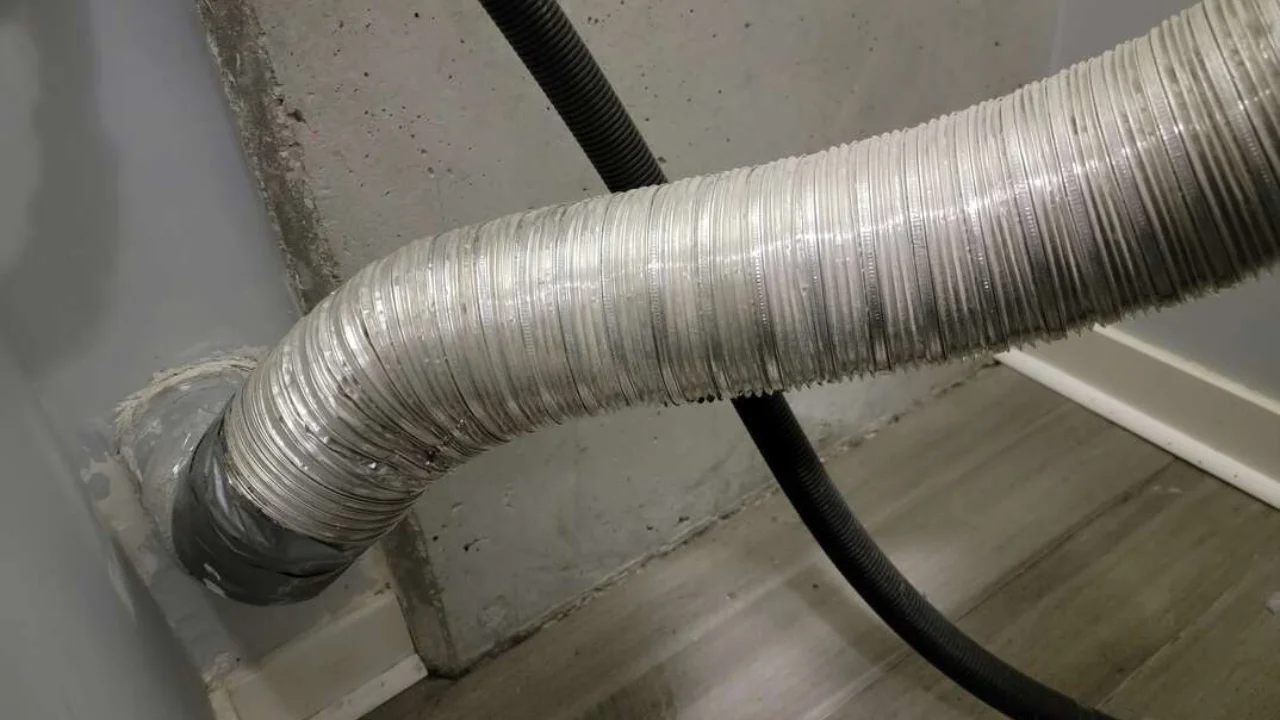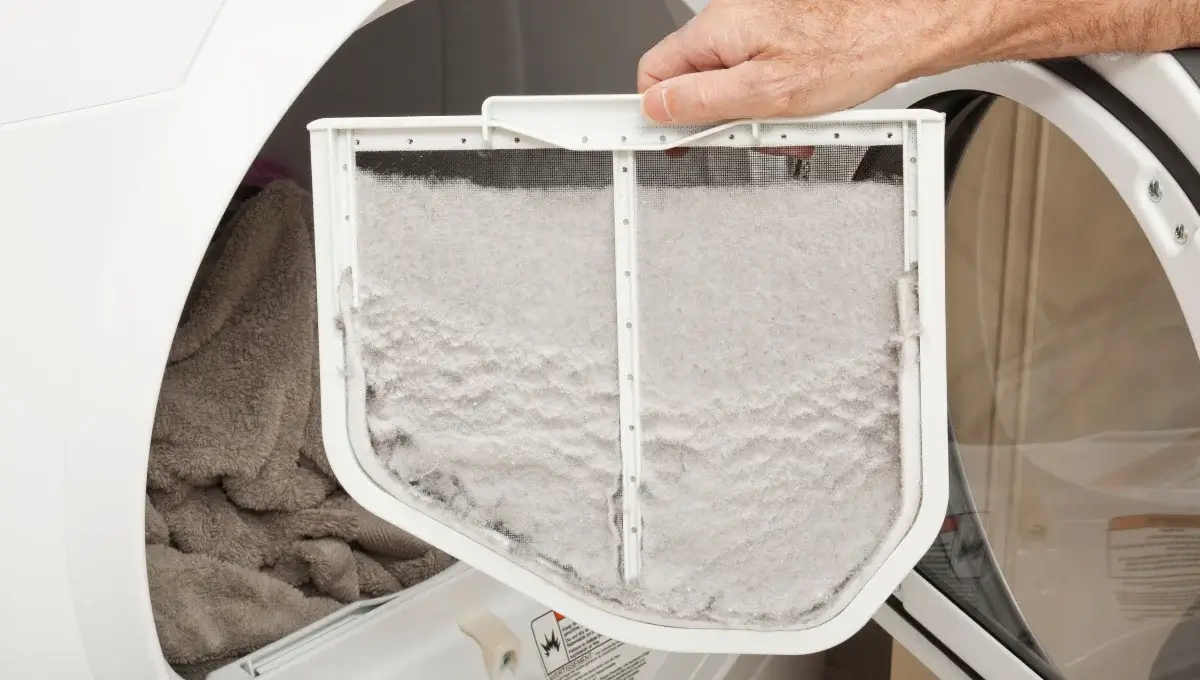
In a pinch, you might wonder, “Can you run a dryer without the vent hose?” Maybe you’re in a temporary living situation or just can’t seem to find the right hose attachment. While it’s technically possible to run a dryer without a vent hose, it’s strongly recommended against it for a few key reasons —:
- safety hazards,
- poor air quality,
- increased energy costs, and more.
In this blog, we’ll discuss what occurs when you run a dryer without the vent hose, different options you can consider, and the risks it can pose.
Let’s begin.
Purposes of Using a Dryer Vent Hose
Before we talk about whether you can use a dryer without a vent hose, let’s first understand why we have one. The main reason is to safely remove hot, damp air and lint when drying clothes. This keeps extra moisture outside your home and lowers the risk of fires caused by too much lint gathering.
So, Can You Run a Dryer Without the Vent Hose?
While it’s possible to operate a dryer without a vent hose, it’s not recommended due to safety concerns. So, what happens if you use your dryer without one?
Lint Buildup and Fire Hazard

Dryers work by tumbling clothes in hot air, which removes moisture. This hot air also carries lint shed from your clothes. A vent hose channels this hot, lint-laden air outside. Without a vent, lint builds up inside the dryer, around the drum, and in the exhaust path. This lint buildup is a major fire hazard.
While it’s not recommended, electric dryers can sometimes be used without venting. What happens if you run an electric dryer without a vent? This can still lead to moisture and lint buildup, posing fire risks.
Moisture and Mold Issues
Dryers also remove moisture from your clothes. Without a vent, this moisture gets released into the room where the dryer is located. This can lead to high humidity levels, which can cause condensation, mold growth, and damage to your walls, floors, and even furniture.
Visit our informative blog to learn, “Are indoor dryer vents safe?”
Poor Air Quality
If your dryer isn’t vented properly, the air inside your house can get filled with lint, dust, and other stuff from the dryer. Breathing in this dirty air can be bad for your health, especially if you have breathing problems.
Reduced Efficiency and Longer Drying Times
A vent hose helps the dryer circulate air efficiently. Without a vent, the dryer has to work harder to remove moisture from your clothes, which ultimately leads to longer drying times and higher energy bills.
Gas Dryer Danger
If you have a gas dryer, using it without a vent hose is especially dangerous. Gas dryers produce carbon monoxide, a poisonous gas that can be dangerous if it builds up in an enclosed space. A vent hose is essential for safely venting carbon monoxide outdoors.
Overheating
When hot air is trapped inside the dryer, it can cause the machine to overheat. This can damage the dryer’s heating elements and other components, leading to costly fixing or even a total breakdown.
Visit our insightful blog to get the right answer to your question, “How often should condo dryer vents be cleaned?”
Safety Tips for Running a Dryer Without a Dryer Vent
You can follow these safety tips when using your dryer without a vent to reduce the risk of gas buildup or fire hazards.
- Keep the Area Clear: Make sure to have good airflow in the room where your dryer is. Open windows and doors when the dryer is running to let out gases and damp air.
- Reduce Lint Buildup: Use a lint trap to catch lint and prevent it from building up in the dryer. Clean the lint trap on a daily basis to avoid any fire risks.
- Attach a Temporary Dryer Vent Hose: Install a temporary aluminum pipe on your dryer to direct warm air, lint, and gases outside the house. This helps maintain indoor air quality and improves dryer efficiency. You can even use a dryer vent in a window by connecting your dryer’s vent pipe to it.
- Check Humidity: Use a tool called a hygrometer to check how much moisture is in the room. If it’s too humid, take steps to reduce the humidity.
- Carbon Monoxide Alarm: Place a carbon monoxide alarm in the room where your dryer is located. It will alert you if there’s a carbon monoxide leak.
Alternatives to Ventless Drying
If venting your dryer isn’t an option right now, here are a few alternatives to consider:
- Ventless Dryer: Look into purchasing a ventless dryer, also known as a condenser dryer. These dryers use a built-in water tank to collect the moisture removed from clothes.
- Move the Dryer: If possible, relocate the dryer to a well-ventilated area where you can vent it temporarily out a window using a short hose attachment.
Check out our insightful blog to find out the right answer to the question, “Is a leaking dryer vent dangerous?”
Safety First
Always prioritize safety when using your dryer. If you must run your dryer without a vent hose for a short period, take extra precautions:
- Clean the lint trap after every single use.
- Never leave the dryer unattended while it’s running.
- Open a window in the laundry room to help expel moisture and heat.
- Get your dryer vent system cleaned regularly by a professional.
Visit our informative blog to learn what happens if you can’t vent your dryer outside.
Contact a Pro
Is your dryer causing trouble? Get professional dryer vent cleaning in Houston, Texas, with Steam Express. Our team ensures thorough cleaning, removing lint and improving dryer performance. Call now for a cleaner, safer home at a special discounted rate! Don’t risk fires or damage – schedule your cleaning today for quicker drying and peace of mind.
Wrapping Up
To sum it up, while it’s technically possible to run a dryer without the vent hose, it’s strongly advised against due to safety hazards like gas buildup, increased fire risk, and potential health issues. Therefore, always ensure your dryer is properly vented to maintain a safe and efficient drying process. Can You Run a Dryer Without the Vent Hose? It’s best not to take the risk.
FAQs
Can I run an electric dryer without a vent hose?
In a pinch, you can technically run an electric dryer without a vent hose, but it’s a fire hazard, reduces efficiency, and can damage your clothes and home due to moisture buildup.
Do electric dryers need a vent?
Yes, electric dryers need a vent to safely remove hot air, lint, and moisture, preventing fire hazards and mold growth.
Can you use a dryer without a lint trap?
Absolutely not! Lint traps prevent fire hazards by catching flammable dryer lint. Skip the trap and risk a fire.
Is there a difference between venting an electric and gas dryer?
Yes, both require venting, but gas dryers also expel carbon monoxide, making proper venting even more crucial.
How often should I clean my dryer vent hose?
Ideally, clean your dryer vent hose every year or more frequently if you use your dryer often.
Can I clean my dryer vent myself?
Yes, you can often clean the accessible parts of the vent hose with a dryer vent cleaning kit. For long or complex vent systems, consider professional cleaning.
What temperature should my dryer vent hose be?
Dryer vent hoses should be able to withstand high temperatures, typically around 140°F (60°C). Check your dryer’s manual for specific recommendations.
Should I insulate my dryer vent hose?
Insulating your dryer vent hose in cold climates can help prevent moisture condensation within the hose but ensure proper ventilation at the dryer exhaust.

